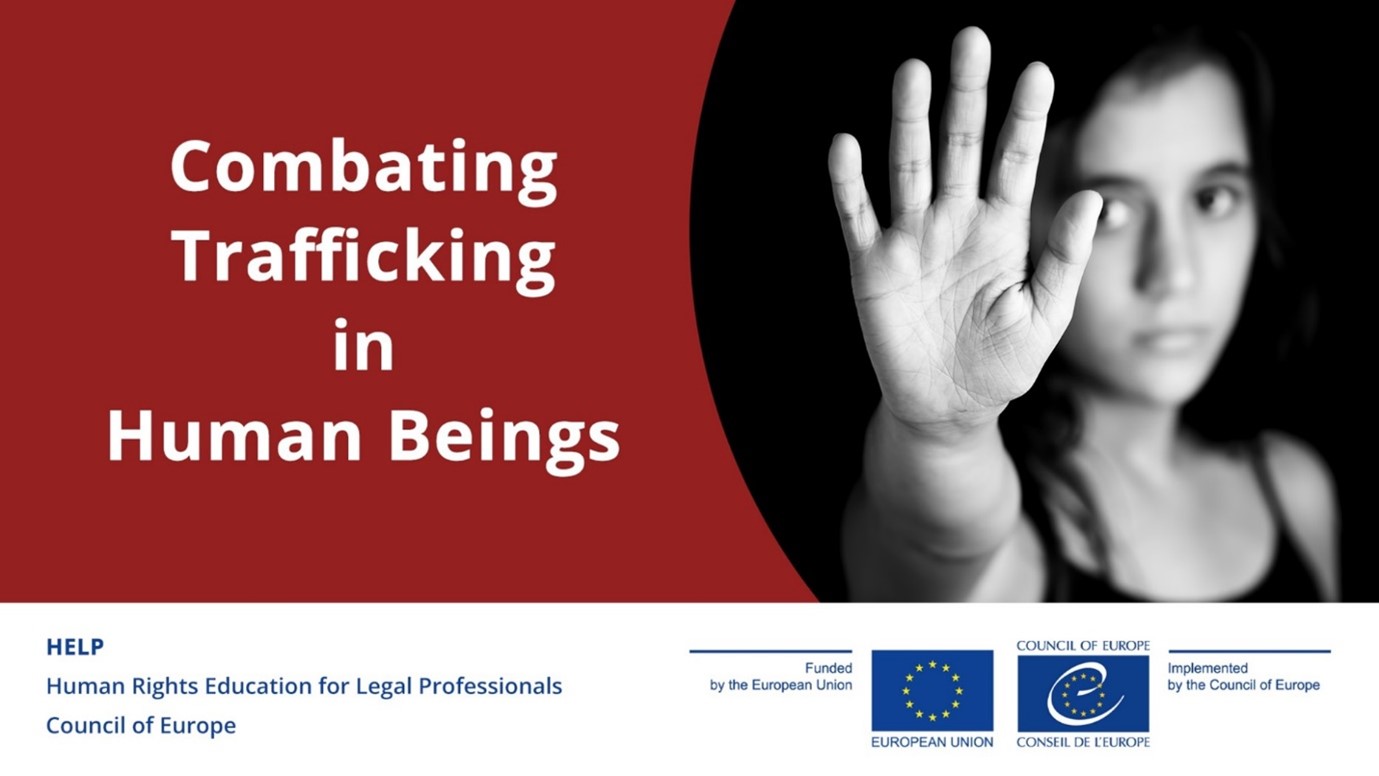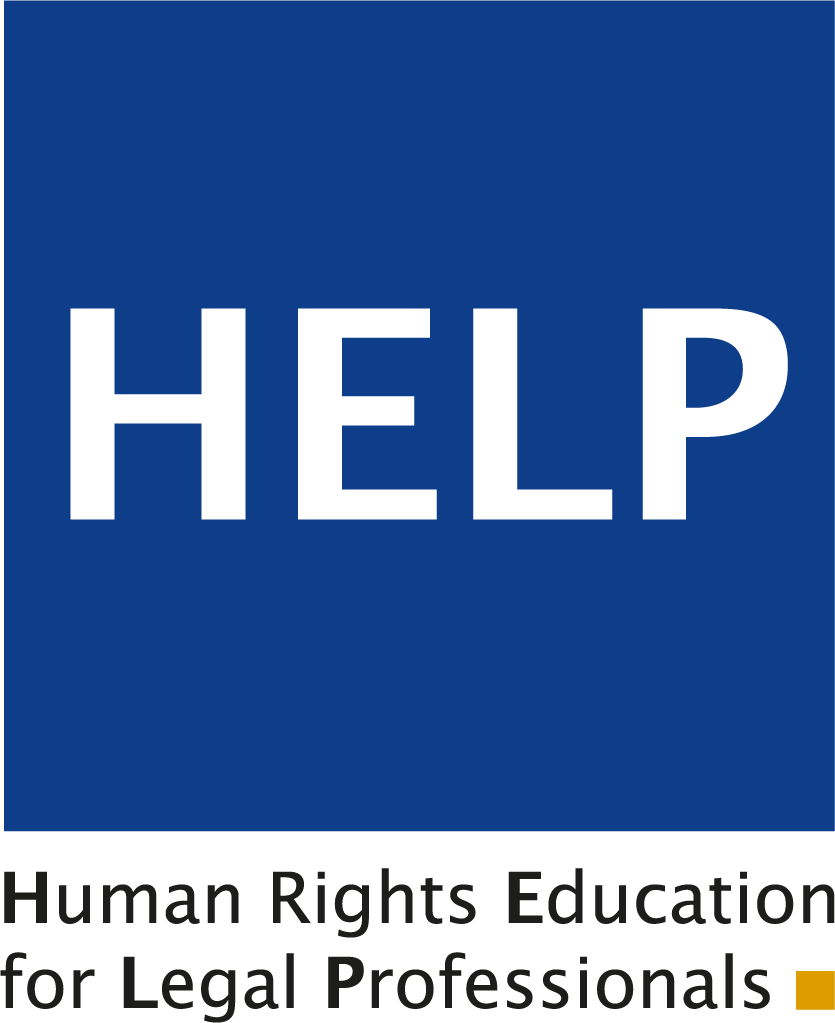The Council of Europe HELP course on Combating Trafficking in Human Beings was initially developed in 2017. It was updated now by the Human Rights Education for Legal Professionals (HELP) Programme of the Council of Europe, using the HELP Methodology, and in close cooperation with the CoE Anti-Trafficking Division. The update has been made possible under the EU-CoE 'HELP in the EU III' Project to include the recent case-law of the European courts (the European Court of Human Rights and the Court of Justice of the European Union), as well as the EU and CoE framework.
Trafficking in human beings is a serious crime. It treats human beings as a commodity to be bought and sold, and to be put to forced labour, usually in the sex industry but also, for example, in the agricultural sector, declared or undeclared sweatshops, for a pittance or nothing at all. This grave violation of human rights affects thousands of victims every year across the world, including in Europe. All indicators point to an increase in the number of victims. While women constitute the majority of identified trafficking victims, men are also significantly affected. Furthermore, many of the victims are young, sometimes children.
Often linked to organised crime, trafficking represents one of the most lucrative activities for such criminal groups. It must be fought wherever it is discovered, just as vigorously as drug trafficking and money laundering. Action to combat this persistent assault on humanity is one of a number of fronts on which the Council of Europe is battling on behalf of human rights and human dignity. In addition to the Council of Europe Convention on Action against Trafficking in Human Beings, the course explores the case law of the European Court of Human Rights, relevant instrument issued by the European Union, and other international legal instruments, along with national good practices.
The course is tailored to the learning needs of legal and other professionals engaged in combating trafficking in human beings. The course is developed in an interactive way and has eleven modules. The first two modules introduce the learner to the key definitions, and concepts relevant for combating human trafficking. They also address the relevant international legal framework, as developed at the level of the CoE and of the EU. The following seven modules discuss key elements of prevention human trafficking, and victim protection. The tenth module explain the link between technology and human trafficking and the last module concerns combating human trafficking for the purpose of labour exploitation. Here is the course outline:
Introductory Module
- About the course and the Council of Europe HELP Programme
- For whom and by whom
- Learning objectives
- Introductory video
- Resources and structure
Module 1 - Introduction and legal framework
- Dahn’s story
- The general legal framework
- The Council of Europe response to combating trafficking in human beings
Module 2 - Definitions and legal concepts
- The definition of trafficking in human beings (THB) and its elements
- The case law of the European Court of Human Rights on THB
- The concept of vulnerability and the role of the victim’s consent in trafficking cases to THB
- The different between trafficking in human beings and migrant smuggling
Module 3 - Identification of victims
- The correct and timely identification of THB victims
- The state obligation to have competent authorities and qualified professionals trained in the identification of THB victims
- Different indicators of THB for different forms of exploitation
- Actors involved in victim identification
Module 4 - Assistance to victims of trafficking in human beings
- The right of victims of trafficking to assistance and the related state obligations
- The minimum standards of care that states are responsible to provide to victims
- The right to a recovery and reflection period
- The minimum conditions to grant a temporary residence permit to victims of trafficking
Module 5 - The non-punishment principle
- The concept and the role of the non-punishment principle (NPP) in combating THB
- The international legal framework on the NPP and the case law of the European Court of Human Rights
- Compulsion
- Situations where the NPP may be applicable
- The identification of THB victims and its link to the application of the NPP
Module 6 - Investigation, prosecutions and victims’ rights
- The international legal framework for the investigation and prosecution of THB cases
- Procedural requirements for the investigation and prosecution of THB cases
- The role of financial investigations in THB cases
- How to build the evidentiary base of a THB case, including the appropriate evidence and investigative tools to collect them
- Transnational THB cases and international cooperation instruments
- The victim-centered approach in THB cases
- Measures to prevent secondary victimisation, ensure the safety and security of victims, and prioritise the best interests of child victims in THB case
Module 7 - Sentencing
- The international legal framework for sentencing in THB cases
- Factors, circumstances and considerations for determining the type and severity of a sentence
- Forms of sentencing appropriate in THB cases
- The implications of the legal requalification of THB as a less serious offence
Module 8 - Compensation
- The meaning of reparations and the various modalities involved
- Compensation, its purpose, and why it is provided to victims of trafficking
- The legal framework underpinning the right to compensation for THB victims
- The barriers and challenges faced in obtaining compensation
- The types of damages that can be compensated for
- Available procedures for exercising the right to compensation
Module 9 - The rights to international protection, return and repatriation of victims of trafficking
- Forms of international protection available for THB victims
- The international legal framework on return and repatriation
- The principle of non-refoulement
- When can a victim be returned or repatriated, and potential safety risks
- The rights that should be taken into consideration when addressing the repatriation of THB victims
- The concept of "preferably voluntary" return and its implications
Module 10 - Technology and human trafficking
- The impact of technology on the recruitment and exploitation of THB victims
- How can technology-based initiatives assist THB victims
- Use technologies to support the investigation of THB cases
Module 11 - Trafficking in human beings for the purpose of labour exploitation
- The legal framework on THB for the purpose of labour exploitation and the definition of offences
- Key actors involves in the process of identification and investigation
- Identifying a victim and detecting an offence
- Challenges in victim identification
- Victims’ rights
- Investigations and trials related to cases of THB for the purpose of labour exploitation
- Remedies available to victims
The course is available in English and will soon be translated in other languages.
HELP course on Combating Trafficking in Human Beings
The course is freely available in self-learning format on the CoE HELP e-learning platform. The overall length of the new edition is approximatively 13 hours and those who complete it in self-learning format can obtain an electronic ‘Statement of accomplishment’. To access the course, you need to have a HELP account. If you haven’t created one yet, you can sign up here - it only takes a few minutes.





